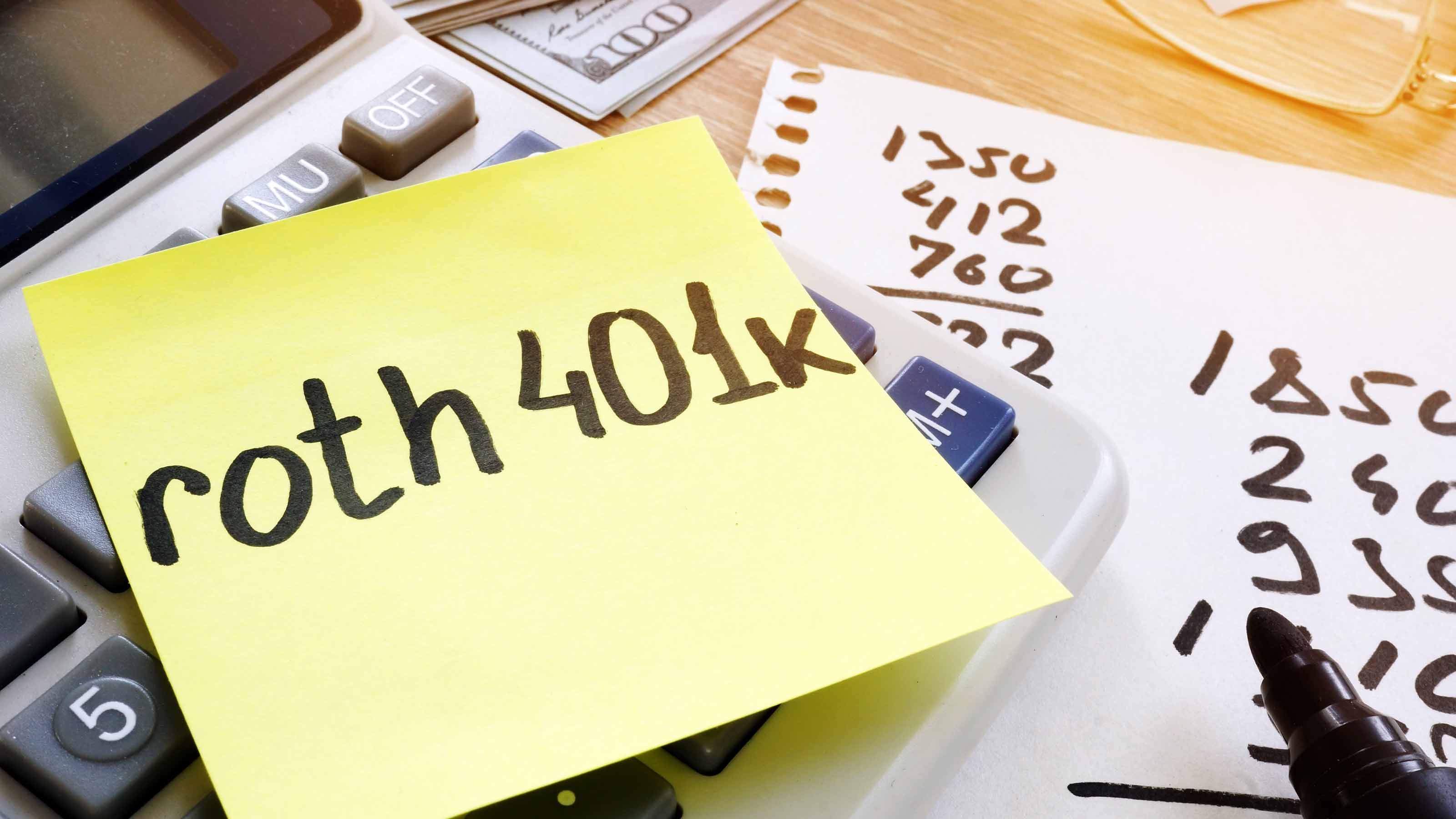How Much Can You Contribute to a SIMPLE IRA for 2020?
The maximum amount workers at small businesses can contribute to a SIMPLE IRA for 2020 is $500 higher than it was for 2019.


A SIMPLE IRA is a retirement plan designed for small businesses with 100 or fewer employees. It's a cheaper (and easier) plan for an employer to set up when compared to an traditional 401(k); however, the amount a worker can save in a SIMPLE IRA is less than a 401(k).
>>For more 2020 tax changes, see Tax Changes and Key Amounts for the 2020 Tax Year.<<
2020 SIMPLE IRA Contribution Limits
For 2020, the annual contribution limit for SIMPLE IRAs was bumped up to $13,500 (that's $500 more than the limit for 2019). Workers age 50 or older can make additional catch-up contributions of $3,000, for a total of $16,500. By comparison, workers younger than 50 can salt away as much as $19,500 in a traditional 401(k) for 2020, plus another $6,500 if they're 50-plus.
From just $107.88 $24.99 for Kiplinger Personal Finance
Become a smarter, better informed investor. Subscribe from just $107.88 $24.99, plus get up to 4 Special Issues

Sign up for Kiplinger’s Free Newsletters
Profit and prosper with the best of expert advice on investing, taxes, retirement, personal finance and more - straight to your e-mail.
Profit and prosper with the best of expert advice - straight to your e-mail.
Employee contributions to a SIMPLE IRA are made on a pretax basis, which lowers taxable income. The invested money grows tax-sheltered until you withdraw it, at which time the distributions will be taxed as ordinary income. If you pull money out before age 59 1/2, you face a 10% early-withdrawal penalty on top of taxes. The withdrawal penalty increases to 25% for SIMPLE IRAs if money is pulled out within two years of signing up for the plan.
Unlike some other retirement plans, a SIMPLE IRA doesn't offer a Roth option, which would allow workers to invest after-tax dollars in the plan and not to be taxed on withdrawals later in retirement.
Employer Contributions to SIMPLE IRAs
Good news for workers participating in a SIMPLE IRA: Employers must make some form of a contribution to employees' accounts. An employer can choose to either make a dollar-for-dollar match of up to 3% of a worker's pay or contribute a flat 2% of compensation, whether the employee contributes or not.
Most employers choose the dollar-for-dollar match of up to 3%, says Ronald Oldano, a certified financial planner and private wealth adviser in Orlando, Fla. However, if an employer has a bad year financially, there's some wiggle room to lower the employer match to 1% or 2% for two years of a rolling five-year period. For example, a company just starting a SIMPLE IRA can elect to match 1% or 2% of each employee's salary for the first two calendar years of the plan, but then must ramp up its match to 3% for the next three years. Once that five-year period is over, the employer can again lower its matching contribution.
If your employer is like most and matches dollar-for-dollar up to 3% of pay, make sure you're contributing at least enough to qualify for the full match.
Also, remember to pick your investments wisely. SIMPLE IRAs can hold a basket of investments, from stocks and bonds to mutual funds and exchange-traded funds. The best investment is one that fits your long-term goals at the right price.
How SIMPLE IRA Savers Can Build a Bigger Nest Egg
If you're already stashing away the maximum contribution allowed in your SIMPLE IRA—$13,500 for employees younger than 50 or $16,500 for 50-plus workers—but want to save even more for retirement, consider opening a separate traditional IRA or Roth IRA, suggests Clark Randall, a certified financial planner and founder of Financial Enlightenment, in Dallas.
For 2020, individuals younger than 50 can contribute up to $6,000 to a traditional IRA or Roth IRA. Retirement savers age 50 and up can make an additional $1,000 catch-up contribution. Roth IRAs have income limits. The maximum amount you can contribute to a Roth IRA for 2020 begins to phase out once modified adjusted gross income hits $124,000 for singles ($196,000 if married filing jointly). There's no tax deduction for Roth IRA contributions. Contributions to a traditional IRA for 2020 are fully tax-deductible for singles and couples as long as one spouse doesn't have a retirement plan through work. If one spouse is covered by a work plan, joint filers must earn $196,000 or less to claim the full tax deduction.
Profit and prosper with the best of Kiplinger's advice on investing, taxes, retirement, personal finance and much more. Delivered daily. Enter your email in the box and click Sign Me Up.

Rivan joined Kiplinger on Leap Day 2016 as a reporter for Kiplinger's Personal Finance magazine. A Michigan native, she graduated from the University of Michigan in 2014 and from there freelanced as a local copy editor and proofreader, and served as a research assistant to a local Detroit journalist. Her work has been featured in the Ann Arbor Observer and Sage Business Researcher. She is currently assistant editor, personal finance at The Washington Post.
-
 Nasdaq Sinks 418 Points as Tech Chills: Stock Market Today
Nasdaq Sinks 418 Points as Tech Chills: Stock Market TodayInvestors, traders and speculators are growing cooler to the AI revolution as winter approaches.
-
 23 Last-Minute Gifts That Still Arrive Before Christmas
23 Last-Minute Gifts That Still Arrive Before ChristmasScrambling to cross those last few names off your list? Here are 23 last-minute gifts that you can still get in time for Christmas.
-
 The Rule of Compounding: Why Time Is an Investor's Best Friend
The Rule of Compounding: Why Time Is an Investor's Best FriendDescribed as both a "miracle" and a "wonder," compound interest is simply a function of time.
-
 457 Plan Contribution Limits for 2026
457 Plan Contribution Limits for 2026Retirement plans There are higher 457 plan contribution limits in 2026. That's good news for state and local government employees.
-
 Medicare Basics: 12 Things You Need to Know
Medicare Basics: 12 Things You Need to KnowMedicare There's Medicare Part A, Part B, Part D, Medigap plans, Medicare Advantage plans and so on. We sort out the confusion about signing up for Medicare — and much more.
-
 The Seven Worst Assets to Leave Your Kids or Grandkids
The Seven Worst Assets to Leave Your Kids or Grandkidsinheritance Leaving these assets to your loved ones may be more trouble than it’s worth. Here's how to avoid adding to their grief after you're gone.
-
 SEP IRA Contribution Limits for 2026
SEP IRA Contribution Limits for 2026SEP IRA A good option for small business owners, SEP IRAs allow individual annual contributions of as much as $70,000 in 2025, and up to $72,000 in 2026.
-
 Roth IRA Contribution Limits for 2026
Roth IRA Contribution Limits for 2026Roth IRAs Roth IRAs allow you to save for retirement with after-tax dollars while you're working, and then withdraw those contributions and earnings tax-free when you retire. Here's a look at 2026 limits and income-based phaseouts.
-
 SIMPLE IRA Contribution Limits for 2026
SIMPLE IRA Contribution Limits for 2026simple IRA For 2026, the SIMPLE IRA contribution limit rises to $17,000, with a $4,000 catch-up for those 50 and over, totaling $21,000.
-
 457 Contribution Limits for 2024
457 Contribution Limits for 2024retirement plans State and local government workers can contribute more to their 457 plans in 2024 than in 2023.
-
 Roth 401(k) Contribution Limits for 2026
Roth 401(k) Contribution Limits for 2026retirement plans The Roth 401(k) contribution limit for 2026 has increased, and workers who are 50 and older can save even more.